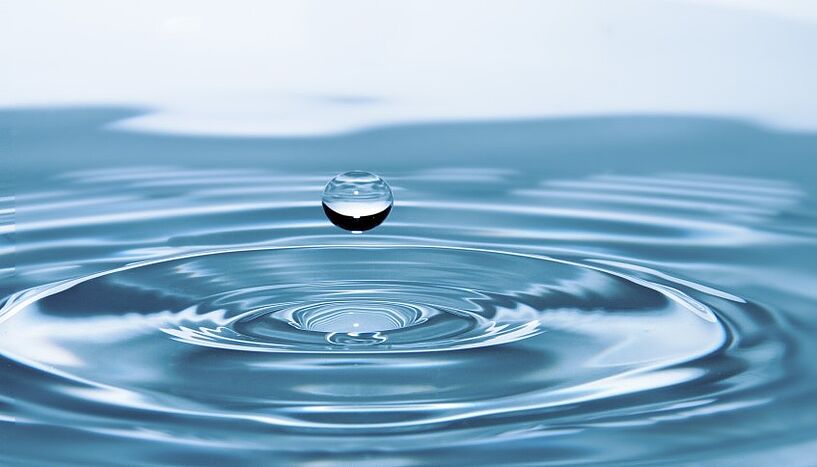Pharmaceutical residues in the Vienna Danube
15. February 2022
© pixabay/pexels
Pollutant concentrations in rivers provide a chemical fingerprint of society
Residues of pharmaceuticals, cosmetics and lifestyle substances enter rivers via wastewater. A recent study shows that the concentration of such trace pollutants in the Vienna Danube at first sight is surprisingly high compared to other EU countries. In the world's most comprehensive study on this topic to date, an international research team involving environmental geoscientist Thilo Hofmann of the University of Vienna has compared the pollution levels of rivers in 104 countries. The study is published in the international journal PNAS.
Potential negative effects of pharmaceutical residues on humans and ecosystems
Residual chemicals in rivers may harm the health of ecosystems and people. The current study was the first to collect internationally comparable data on the concentration of pharmaceutical traces in rivers across all continents. In fact, at one quarter of sampling sites, water samples were contaminated at alarming levels. The 87 researchers involved sampled multiple sites for each of the 137 river catchments studied. At every fourth of the 1052 sites, the scientists measured at least one active pharmaceutical ingredient at a concentration high enough to threaten aquatic organisms or promote resistance to antibiotics.
Substances in the Vienna Danube: Some drug residues strikingly high
"For the Danube in Vienna, we also measured conspicuously high concentrations of some pharmaceuticals, including several antibiotics," reports Thilo Hofmann, deputy head of the Centre for Microbiology and Environmental Systems Science. Higher values were also found for active pharmaceutical ingredients against high blood pressure, allergic reactions and nervous disorders. In addition, there was paracetamol and, in particularly high concentrations, caffeine. "Analyses like this do not only tell us something about possible pollution levels, but they also tell us something about people's lifestyles and health care in the catchment areas studied," Hofmann explains. "We're not looking exclusively at substances here that are toxic or that are difficult to break down and therefore have a particular impact on the environment. Rather, we are concerned generally with anthropogenic substances, i.e., substances introduced by humans," Hofmann adds. In fact, the study also shows that where there was limited influence of humans – one example is the Elliðaár River in Iceland – no contamination was detected.
Reliable comparison of 61 pharmaceutical substances
The study considers 61 substances from the pharmaceutical and lifestyle sectors that have already attracted attention in previous studies. Caffeine, which is also used in pharmaceuticals, is the third most frequently detected substance worldwide. The researchers most frequently encountered the epilepsy drug carbamazepine, followed by the diabetes drug metformin. The researchers worked under close supervision with the same sampling sets. All samples were analysed in a laboratory in the UK at the University of York. Together with a standardised sampling kit, this allows a truly reliable comparison of data from all continents.
Pollution of concern from a researcher's perspective
For the ranking of the investigated river catchments, the concentrations of the measured pollutants were accumulated. The average of the concentrations measured in the Vienna Danube at a total of 7 sites was higher than for most EU countries. The most polluted European samples came from a sampling campaign in Madrid, Spain (ranked 14th out of 137). Hofmann notes, however, that comparisons of individual cities should be viewed with caution: "The increased concentrations in the Danube in Vienna or in Madrid are due to the fact that we took samples directly downstream of the discharge of the treated wastewater. This makes sense in order to be able to draw as many conclusions as possible from the wastewater about the lifestyle of the population," he explains. However, the number and exact location of the sampling points varies between the sub-studies involved, simply because of the respective geography of the locations. This has consequences when comparing the cumulative concentrations of pollutants, emphasises the environmental geoscientist. Those cities that were not sampled directly after the wastewater discharge then supposedly do better in the overall picture. "Vienna actually has an input into the Danube at problematic concentrations for individual substances, but because the Danube carries so much water, the substances are diluted to such an extent that the problem is reduced once again downstream", Hofmann explains. "Nevertheless, the results show us that in the medium term we need an additional, fourth treatment stage for our wastewater treatment plants that can also remove trace substances. We simply can't continue polluting our rivers with our wastewater in the 21st century, even though the necessary technology would be available to treat the wastewater completely."
Risks of river pollution and factors that promote pollution
In the overall picture of the study, it is not only the individual substances but also the mixture of them that can be problematic. "Even if the substances do not reach critical concentrations on their own, possible interactions between the mixtures harbour ecological risks," Hofmann explains. The overall conclusion of the study authors is clear: globally, the pollution of water by pharmaceuticals and other substances threatens human health and the environment. The highest cumulative concentration values were measured south of the Sahara, in South Asia, and in South America. The results also show that the production of pharmaceuticals near rivers, the lack of sewage treatment plants and a dry climate all contribute to river pollution. On the other hand, it is cleaner where there is hardly any access to modern medicine, a sophisticated wastewater treatment system, hardly any human influence and a high degree of dilution.
Text updated 03.03.2022
Publication in PNAS (Proceedings of the National Academy of Sciences):
"Pharmaceutical Pollution of the World’s Rivers", John L. Wilkinson, Thilo Hofmann et al., Proceedings of the National Academy of Sciences (2022)
Scientific contact
Univ.-Prof. Dr. Thilo Hofmann
Zentrum für Mikrobiologie und UmweltsystemwissenschaftUniversität Wien
1090 - Wien, Althanstraße 14
+43-1-4277-53320
thilo.hofmann@univie.ac.at
Further inquiry
Mag. Alexandra Frey
Media Relations ManagerUniversität Wien
1010 - Wien, Universitätsring 1
+43-1-4277-17533
+43-664-8175675
alexandra.frey@univie.ac.at
Downloads:
Abb_1_sampling_DanubeVienna.jpg
File size: 3,65 MB
